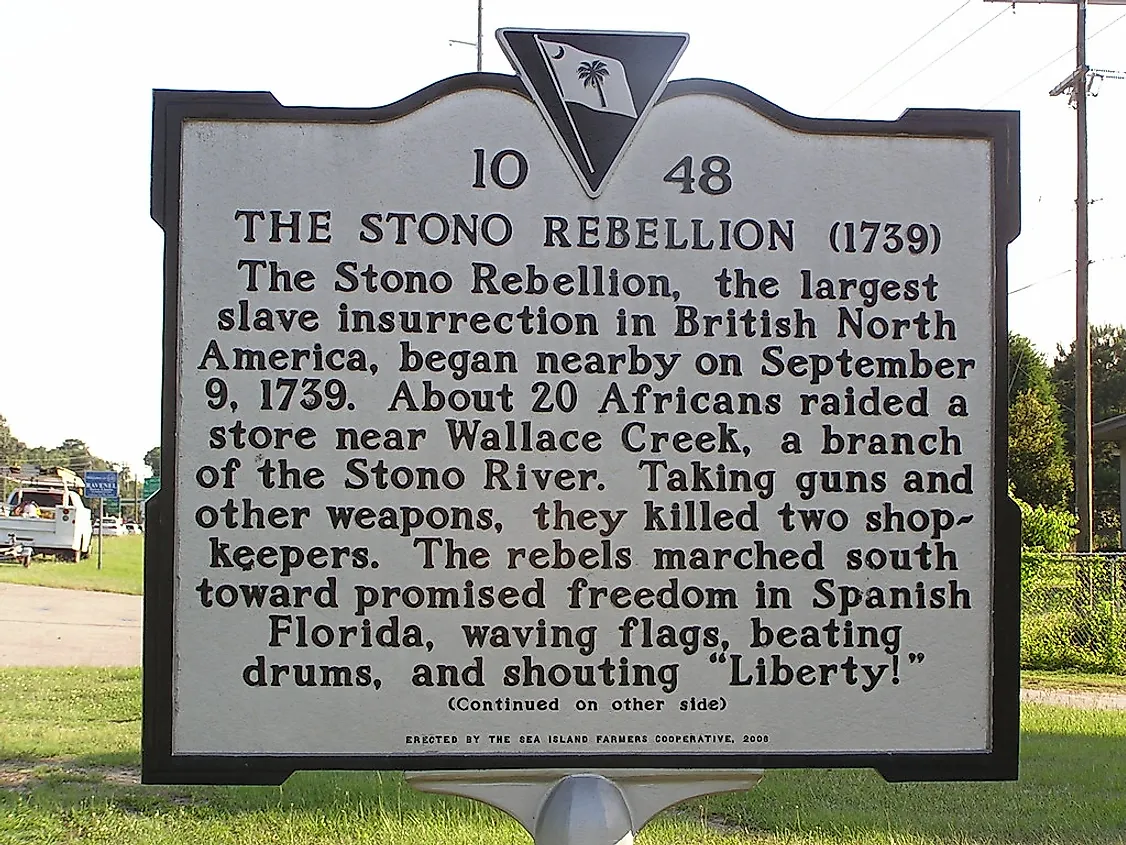What Was the Stono Rebellion?

The Stono Rebellion (Cato’s Rebellion or Cato’s Conspiracy) was a slave insurrection that began on September 9, 1739, in the British colony of South Carolina and culminated with the death of 60 people, mostly African slaves. The rebellion was led by Angolan called Jemmy (referred to as Cato in some reports) and a band of 20 slaves who were likely from the Kingdom Kongo in Central Africa, as the majority spoke Portuguese. Jemmy was a literate slave who was held by the Caters, a family who lived near Stono River. The other 20 slaves are believed to be former soldiers. The rebellion took place on the bank of the Stono River (hence the name).
The Event of the Rebellion
On September 9, 1739, Jemmy gathered a group of 20 African slaves near the Stono River. The group then marched down the road carrying a banner with the words “liberty” and chanting the same in unison. At the Tone River Bridge, the group attacked Hutchenson’s store where they killed the two shopkeepers and seized weapons and ammunition. From the store, they marched southwards to Spanish Florida which was a famous refuge for escapees. Along the way, the gang recruited more slaves and the reluctant ones were forced to join the company. About 23-28 slave overseers (whites) were killed in the processes and six plantations were burned.
Suppressing the Uprising
While on his daily duties, Lieutenant Governor William Bull of South Caroline came across the group but did not confront them. He quickly informed other slaveholders and planters who rallied a militia to confront the group. The following day (September 10), the militia, numbering about 99 men confronted Jemmy and his group (who numbered about 76) at Edisto River. The confrontation led to the death of 47 slaves and 23 whites. Although the slaves lost the battle, they killed more whites than in later rebellions. The heads of the killed slaves were chopped off and placed on the sides of major roadways to act as a warning to other slaves. The slaves who escaped the battle were tracked down and captured. Some were killed while others were sold off to slave markets in West Indies.
Causes of the Uprising
Although the immediate factor that led to the revolt remains unclear, several factors may have contributed to the uprising. Since Spanish Florida hosted slave escapees from the British colonies, the slaves were hopeful of reaching the Spanish territories which were about 150 miles from Stone. A malaria outbreak in Charlestown had recently killed many whites and weakened slaveholders and the slaves may have wanted to make use of the opportunity caused by the epidemic. The passage of the Security Act of 1739 required all white men to carry guns to church on Sundays. This provided an opportunity for slave leaders to carry out a rebellion when armed whites are occupied in church.
Impact of the Rebellion
The Stono Rebellion led to the passage of the 1740 Negro Act which required one white supervise at most ten slaves in any plantation. Slaves were also prohibited from growing their food or learning to read. The working conditions of the slaves were also improved and slave masters were prohibited from provoking their slaves. The legislature also prohibited the importation of new slaves from the West Indies and Africa.











